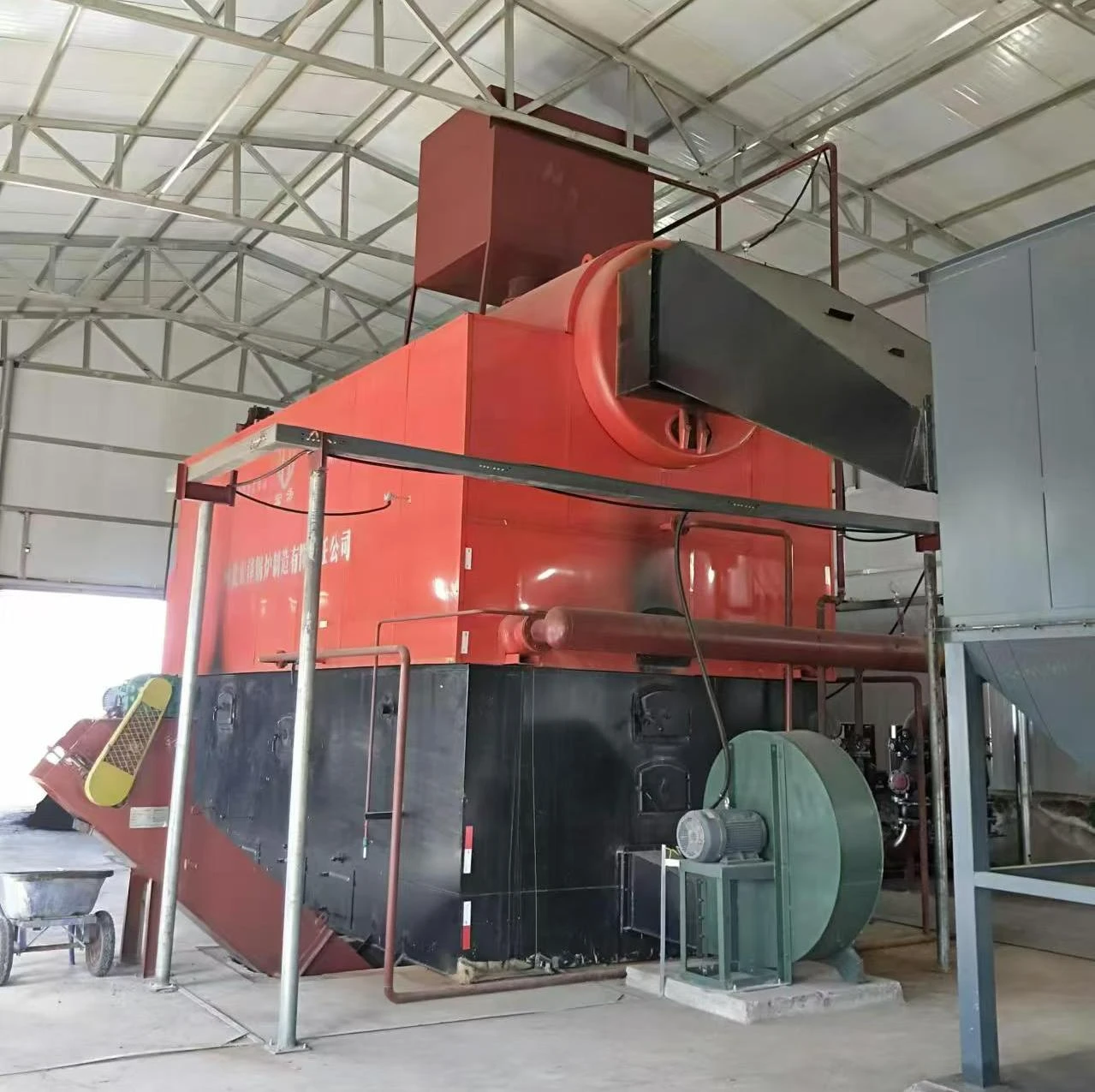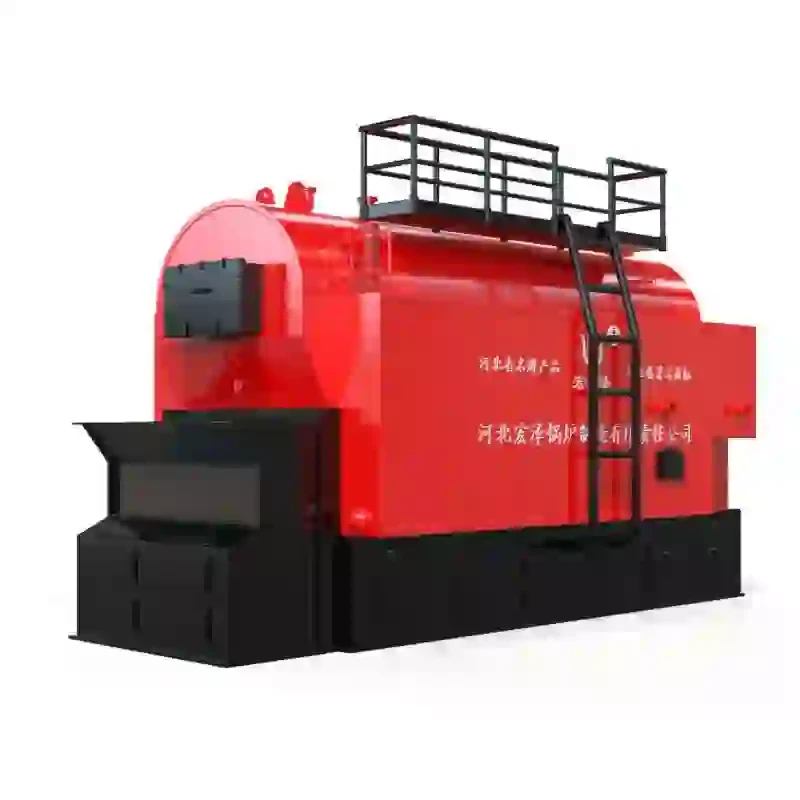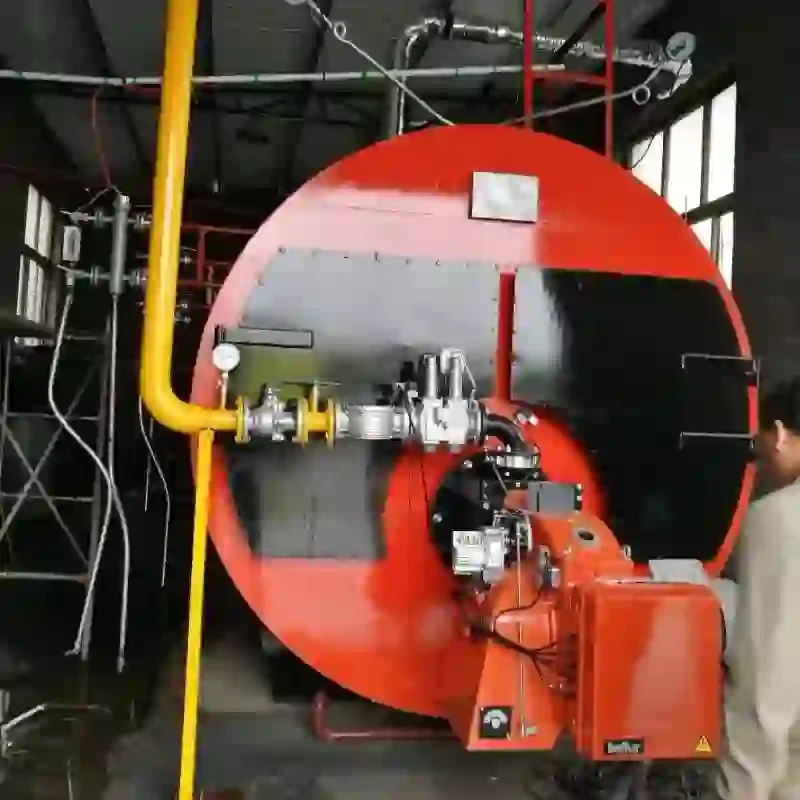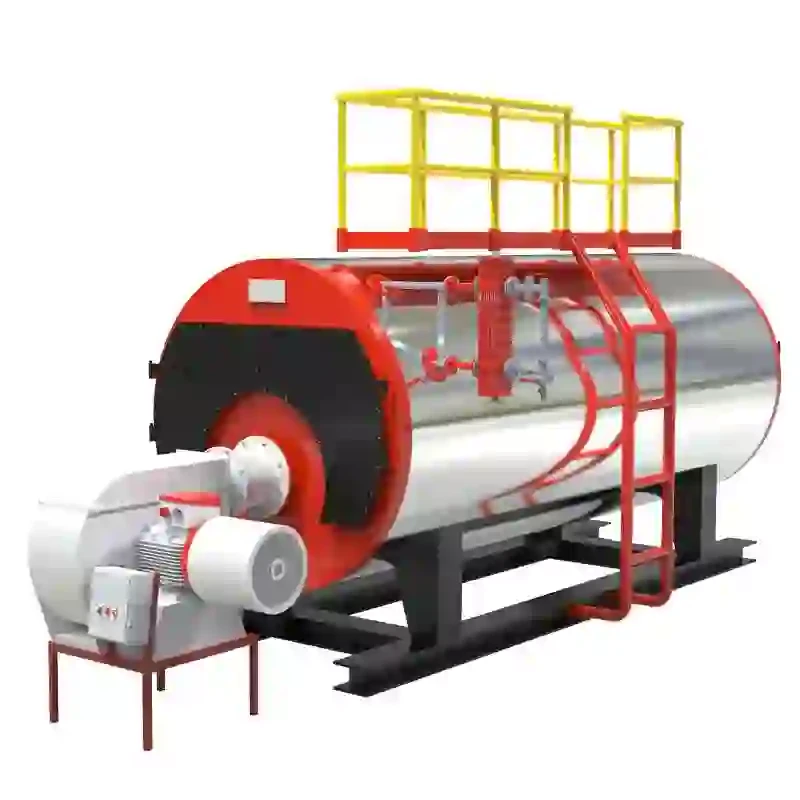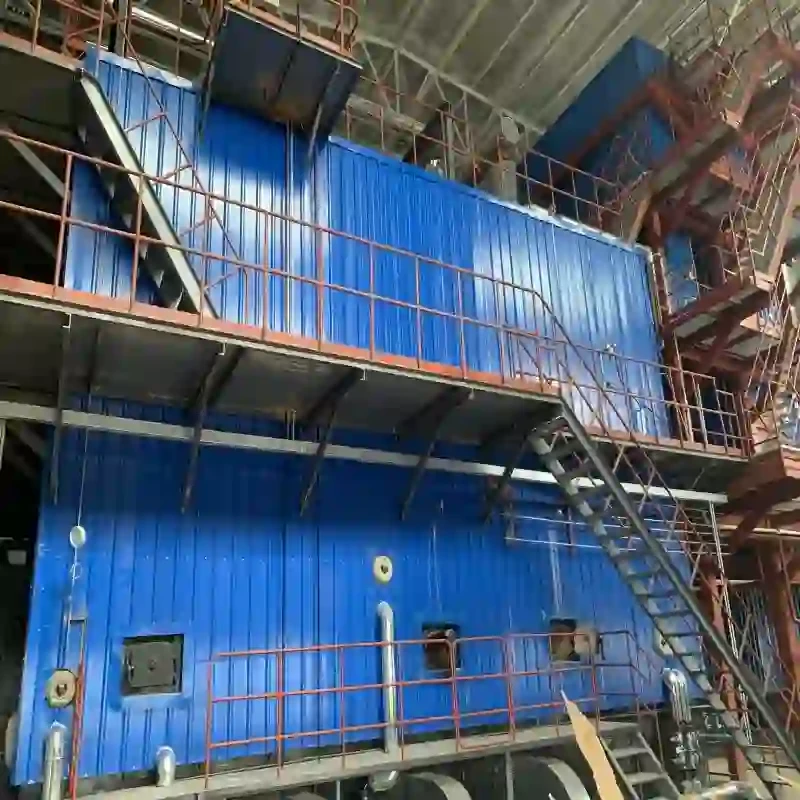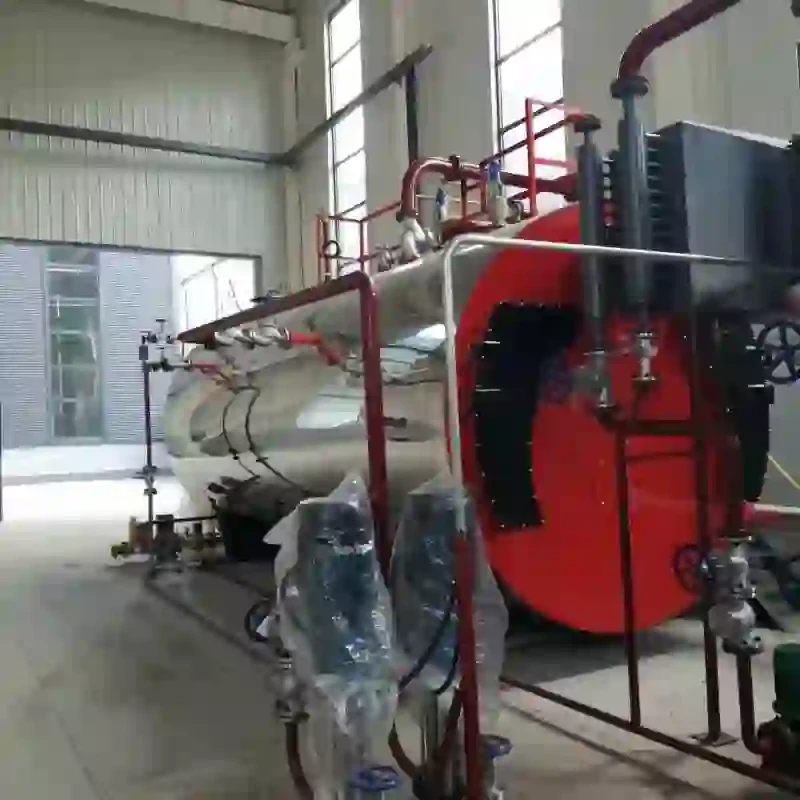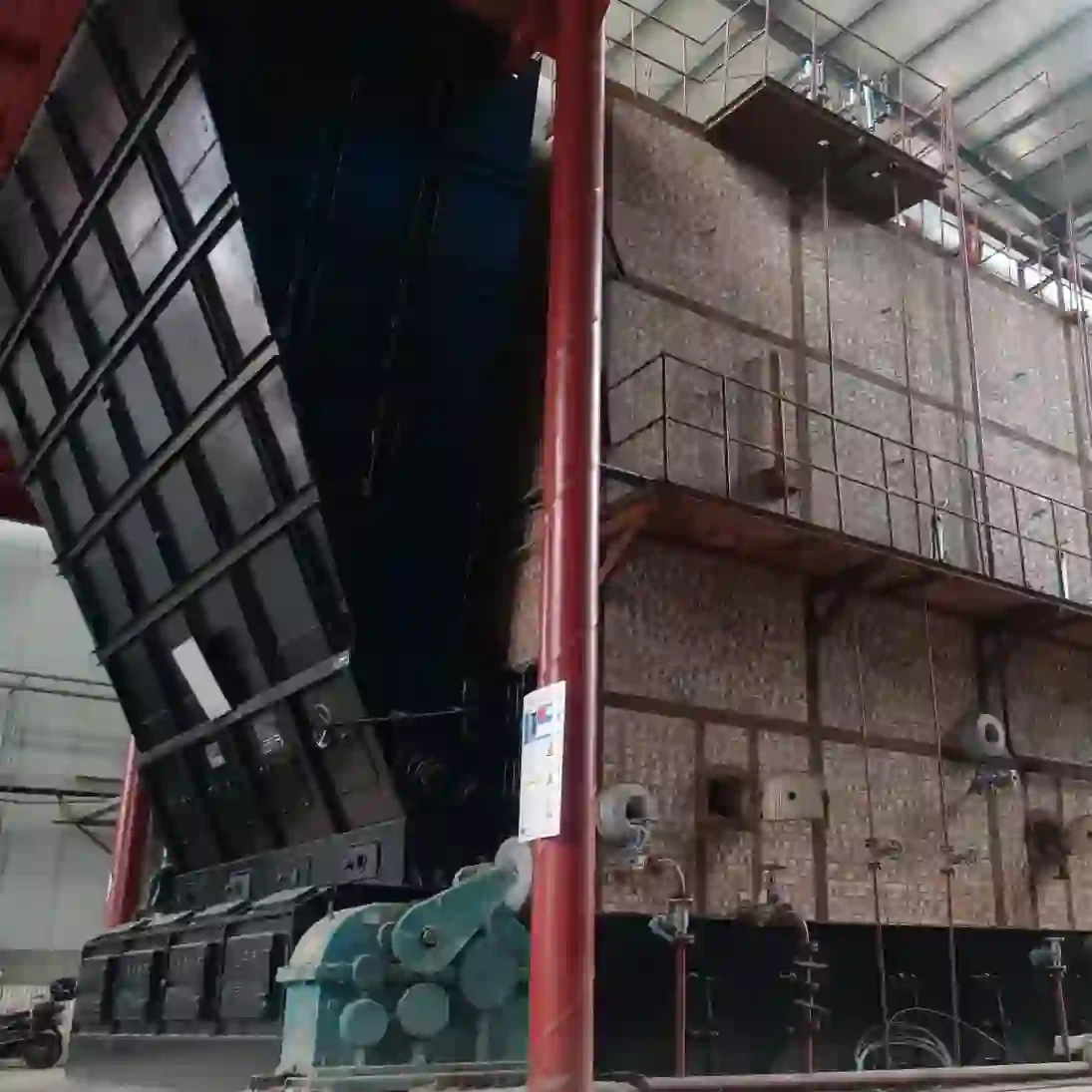
Aug . 17, 2025 02:40 Back to list
Top Commercial Oil Fired Steam Boilers | High Efficiency & Reliability
The Pivotal Role of Oil Fired Steam Boilers in Industrial Advancement
In the dynamic landscape of industrial operations, the demand for reliable, efficient, and robust steam generation equipment is paramount. Among the diverse array of heating solutions, the commercial oil fired steam boiler stands out as a foundational component for countless sectors, driving processes ranging from power generation to intricate chemical synthesis. These sophisticated systems are engineered to convert various types of fuel oil, including light oil, heavy oil, and even furnace oil, into high-pressure steam, a critical energy carrier for numerous applications. The prevailing industry trend emphasizes not only enhanced thermal efficiency but also stringent adherence to environmental regulations concerning emissions, pushing manufacturers to innovate in burner technology and combustion control. Furthermore, the longevity and low maintenance requirements of a well-designed oil fired steam boiler contribute significantly to reduced operational expenditures, making them a prudent long-term investment for enterprises aiming for sustainable growth. The adaptability of these boilers to fluctuating fuel prices, particularly in regions with established oil supply chains, further underscores their strategic importance. Market analyses consistently indicate a steady demand for high-capacity, automated, and energy-recovery-equipped units, reflecting the industrial shift towards greater automation and energy conservation. The evolution of design, incorporating features like corrugated furnaces and multi-pass flue gas structures, directly addresses the need for superior heat transfer and minimized heat loss, ultimately maximizing the boiler's overall energy conversion efficiency. This continuous refinement ensures that modern oil-fired steam boilers remain at the forefront of industrial heating technology, meeting the rigorous demands of contemporary manufacturing and processing environments.
Technical Specifications and Performance Metrics of Advanced Oil Fired Steam Boilers
Understanding the intricate technical parameters of a commercial oil fired steam boiler is crucial for optimal selection and deployment. Modern designs commonly feature a three-pass wet-back structure, a configuration renowned for its exceptional thermal efficiency, often exceeding 92%, and its reduced refractory maintenance due to the water-cooled rear combustion chamber. The operational pressure for these units typically ranges from 0.7 MPa to 2.5 MPa, catering to a wide spectrum of industrial needs, from low-pressure heating to high-pressure power generation. Key components include the boiler shell, furnace, smoke tubes, and a highly efficient burner system capable of burning various types of fuel oil, including heavy oil, light diesel, and even purified waste oil, ensuring versatility. For instance, a typical oil fired steam boiler manufacturer would offer models with steam capacities varying from 1 ton/hr (0.7 MW) to over 20 ton/hr (14 MW), providing solutions for both small-to-medium enterprises and large-scale industrial complexes. The internal heat exchange surfaces are meticulously designed to maximize heat absorption, often utilizing finned tubes or specialized smoke tubes that enhance turbulence and improve heat transfer coefficients. Furthermore, advanced control systems, including PLC (Programmable Logic Controller) based automation, provide precise temperature and pressure regulation, optimize combustion, and facilitate remote monitoring and fault diagnosis. This level of automation ensures stable operation, reduces manual intervention, and significantly enhances safety protocols, aligning with international standards such as ASME and EN 12953. The integration of economizers and air preheaters is also a common feature, recovering waste heat from flue gases to preheat feedwater or combustion air, thereby further boosting overall system efficiency and contributing to the competitive oil fired steam boiler prices by lowering lifetime operating costs.
| Parameter | Value Range | Unit/Description |
|---|---|---|
| Steam Capacity | 1 to 20+ | ton/hr (or 0.7 to 14+ MW) |
| Design Pressure | 0.7 to 2.5 | MPa (100 to 360 psi) |
| Thermal Efficiency | ≥92% | (Gross Calorific Value) |
| Fuel Type | Light Oil, Heavy Oil, Furnace Oil | (Versatile burner options) |
| Operating Temperature | 170 to 225 | °C (Saturated Steam) |
| Emission Compliance | Low NOx burner options | (Meets local regulations) |
| Lifespan | 20+ | Years (with proper maintenance) |

The Rigorous Manufacturing Process and Quality Assurance of Commercial Oil Fired Steam Boilers
The production of a high-performance commercial oil fired steam boiler is a testament to precision engineering, robust material science, and stringent quality control. The manufacturing journey begins with the selection of premium-grade steel, typically boiler plate specifications like SA-516 Grade 70 or Q345R, chosen for their superior strength, weldability, and resistance to high temperatures and pressures. Key manufacturing processes include automated submerged arc welding for shell and tube plate fabrication, ensuring consistent, high-integrity welds that meet or exceed industry standards such as ASME Section IX and ISO 3834. CNC machining is extensively utilized for precise cutting of steel plates and drilling of tube sheets, guaranteeing dimensional accuracy and facilitating efficient assembly. Following fabrication, crucial steps like hydrostatic testing are performed to verify the boiler's pressure containment integrity, alongside non-destructive testing (NDT) methods, including ultrasonic testing (UT), radiographic testing (RT), and magnetic particle inspection (MPI), to detect any subsurface or surface flaws in welds and materials. Each boiler component, from the main pressure vessel to the smallest flange, undergoes meticulous inspection against design specifications and international codes like ISO 9001 for quality management and ANSI standards for component compatibility. This comprehensive quality assurance regimen not only extends the operational lifespan of the boiler, often exceeding 20-25 years with proper maintenance, but also ensures safe and reliable performance under continuous industrial loads. The corrosion resistance of internal components is further enhanced through material selection and, where necessary, specialized surface treatments, ensuring consistent efficiency and reducing the need for premature repairs.

Diverse Applications and Strategic Advantages in Industrial Sectors
The versatility of a furnace oil fired steam boiler makes it indispensable across a vast array of industries, each leveraging its unique advantages for critical operations. In the petrochemical sector, these boilers provide the high-temperature, high-pressure steam essential for refining crude oil, cracking processes, and various chemical reactions, where consistency and reliability are non-negotiable. For the metallurgical industry, steam is vital for processes like metal tempering, surface treatment, and component drying, contributing to the quality and efficiency of metal production. Within the water supply and drainage industry, steam is utilized for sterilization of water treatment equipment, heating of pipelines in cold climates, and driving desalination processes. Beyond these, industries such as textile manufacturing, food and beverage processing (for sterilization and cooking), pharmaceuticals (for pure steam generation and autoclaving), and district heating systems rely heavily on the consistent and scalable steam output of these boilers. The primary advantages include exceptional energy efficiency, leading to substantial reductions in operating costs due to optimized fuel consumption and advanced heat recovery systems. Modern oil fired steam boiler units are designed with advanced combustion technology, including low NOx burners, significantly reducing environmental impact by minimizing harmful emissions, thus aiding compliance with increasingly strict global regulations. Furthermore, their robust construction and sophisticated control systems ensure high reliability and operational safety, minimizing downtime and maintenance requirements, which is a critical factor for continuous production lines. Customer feedback consistently highlights the superior thermal performance and robust construction of these units, often citing lower fuel consumption compared to older models and fewer unscheduled maintenance events. This proven track record in diverse, demanding environments reinforces their status as a preferred choice for industrial steam generation.

Selecting Your Manufacturer: Custom Solutions and After-Sales Support
Choosing the right oil fired steam boiler manufacturer is a strategic decision that extends beyond just the initial purchase price, encompassing long-term operational efficiency, reliability, and support. A reputable manufacturer will not only offer competitive oil fired steam boiler prices but also demonstrate a profound commitment to quality through international certifications such as ISO 9001 for quality management systems and ASME stamps for boiler and pressure vessel code compliance. Key differentiators include a manufacturer's capacity for customization; the ability to tailor a commercial oil fired steam boiler to specific space constraints, fuel availability, steam capacity requirements, and operational pressures is invaluable for complex industrial setups. This might involve designing specialized economizers, integrating advanced automation and SCADA systems, or adapting the burner for multi-fuel capabilities. Established manufacturers often boast decades of service in the industry, evidenced by a robust portfolio of successful installations and long-standing partnerships with global engineering firms. Look for suppliers who can provide comprehensive engineering support from concept to commissioning, including site assessment, detailed technical drawings, and installation guidance. Post-purchase support is equally vital, covering spare parts availability, regular maintenance services, operator training, and 24/7 technical assistance to minimize downtime. Companies with a strong track record of service, transparent delivery cycle explanations (typically 45-90 days depending on customization and scale), and clear warranty promises (e.g., 12-24 months for main components) instill greater confidence and ensure a higher return on investment. Furthermore, leading manufacturers often share success stories or case studies, showcasing their boilers performing optimally in challenging industrial environments, providing tangible proof of their expertise and reliability.
Frequently Asked Questions (FAQ) and Essential Considerations
Q1: What are the primary advantages of an oil fired steam boiler over other fuel types?
A: The primary advantages of an oil fired steam boiler include high energy density of fuel oil, which translates to compact boiler designs for significant steam output, making them ideal where space is a constraint. Oil provides consistent combustion characteristics, ensuring stable steam generation and precise temperature control. Furthermore, oil is relatively easy to store and transport, and the infrastructure for oil supply is well-established globally. Modern oil boilers incorporate advanced burner technologies that ensure high combustion efficiency and reduced emissions, complying with environmental standards. They also offer greater flexibility in terms of installation locations compared to natural gas, which requires pipeline access, and solid fuels, which demand extensive storage and ash handling systems.
Q2: How does a commercial oil fired steam boiler ensure energy efficiency?
A: Energy efficiency in a commercial oil fired steam boiler is achieved through several design innovations. Most modern units feature a three-pass design, maximizing heat transfer by extending the path of hot flue gases through the boiler. A "wet-back" design eliminates the need for rear refractory, reducing heat loss and maintenance. The integration of economizers preheats feedwater using waste heat from flue gases, significantly lowering fuel consumption. Air preheaters also recover heat to warm combustion air, improving burner efficiency. Advanced combustion controls, including variable speed drives for fans and pumps, precisely regulate air-to-fuel ratios, optimizing burning and minimizing excess air. Insulation with high thermal resistance further reduces heat radiation losses, contributing to overall system efficiency.
Q3: What maintenance is required for a commercial oil fired steam boiler?
A: Regular maintenance is crucial for the longevity and efficient operation of a furnace oil fired steam boiler. This includes daily checks of water levels, pressure, and burner operation. Weekly tasks involve blowdown operations to remove sludge and suspended solids, and checking fuel filters. Monthly, burner components, safety valves, and control systems should be inspected. Annually, a thorough inspection by a certified technician is required, involving internal boiler inspection for scale or corrosion, cleaning of fire tubes and water-side surfaces, calibration of controls, and testing of all safety devices. Proper feedwater treatment is also paramount to prevent scaling and corrosion, which can severely impact efficiency and shorten boiler life. Adherence to a manufacturer's recommended maintenance schedule and prompt addressing of any operational anomalies are key to reliable performance.
Q4: What are the typical delivery and warranty terms for these boilers?
A: The delivery cycle for a commercial oil fired steam boiler typically ranges from 45 to 90 days, varying based on boiler capacity, level of customization, and current production schedules. Complex or large-scale projects may require longer lead times. Manufacturers usually provide comprehensive warranty coverage, often 12 to 24 months for the main boiler body from the date of commissioning or 18 months from the date of shipment, whichever comes first. Components like burners, pumps, and control systems are typically covered by their respective original equipment manufacturer (OEM) warranties. Trustworthy manufacturers also offer extensive after-sales support, including installation supervision, commissioning, operator training, and readily available spare parts to ensure seamless long-term operation. It is essential to review the specific warranty and service level agreements provided by your chosen oil fired steam boiler manufacturer.
Conclusion: Powering Industrial Future with Advanced Oil Fired Steam Boilers
The continuous evolution of the commercial oil fired steam boiler underscores its enduring significance as a cornerstone of industrial heating and power generation. With advancements in combustion technology, material science, and automation, these boilers offer unparalleled efficiency, reliability, and environmental compliance, meeting the increasingly stringent demands of modern manufacturing and processing sectors. Their adaptability to various oil types, robust construction ensuring extended operational lifespans, and the potential for significant energy cost savings through optimized designs make them a strategic asset for any industrial enterprise. For decision-makers and technical personnel in petrochemical, metallurgy, food & beverage, textile, and other vital industries, investing in a high-quality oil fired steam boiler from a reputable manufacturer is not merely an acquisition of equipment; it is an investment in sustained productivity, operational safety, and long-term economic viability. As industries strive for greater sustainability and efficiency, the role of these sophisticated steam generation systems will only continue to grow, driving progress across global industrial landscapes.
References
- American Society of Mechanical Engineers (ASME) Boiler and Pressure Vessel Code, Section I: Power Boilers.
- International Organization for Standardization (ISO) 9001: Quality management systems.
- European Standard (EN) 12953: Shell boilers.
- United States Environmental Protection Agency (EPA) Emission Standards for Industrial, Commercial, and Institutional Boilers.
- Fluid Mechanics and Thermodynamics of Heat Exchangers, with applications to boiler design.
-
Comprehensive Guide to Steam Boiler Installation Diagram – Global Best Practices and Future Trends
NewsNov.24,2025
-
A Practical Guide to the Selection of Steam Boiler for Industrial Efficiency
NewsNov.23,2025
-
Comprehensive Guide to Steam Boiler PDF Manuals and Their Global Impact
NewsNov.22,2025
-
Discover How Steam Boiler Videos Improve Industrial Training & Safety
NewsNov.22,2025
-
Comprehensive Guide to Wood Fired Steam Boiler Design – Efficiency, Applications, and Innovations
NewsNov.21,2025
-
Comprehensive Guide to Steam Boiler Working – Efficiency & Applications
NewsNov.20,2025
Related PRODUCTS






